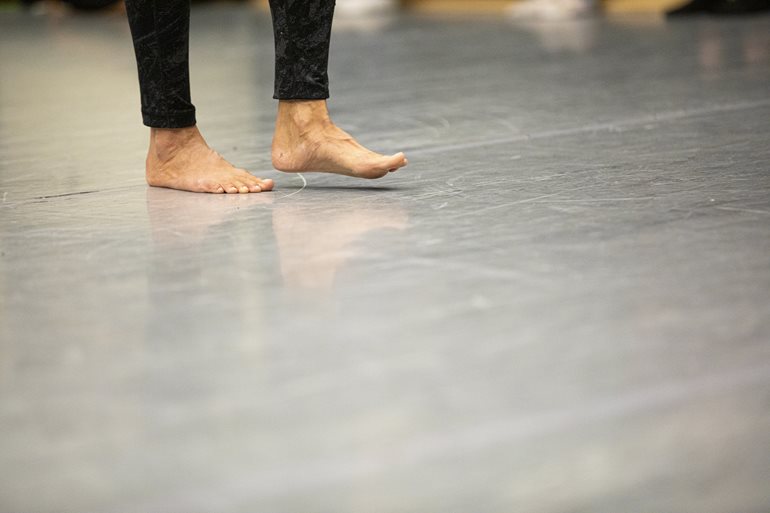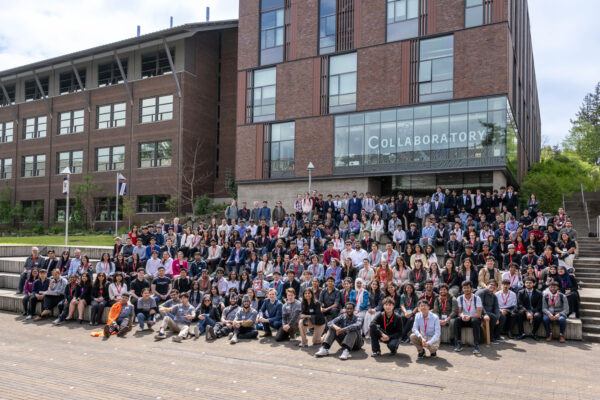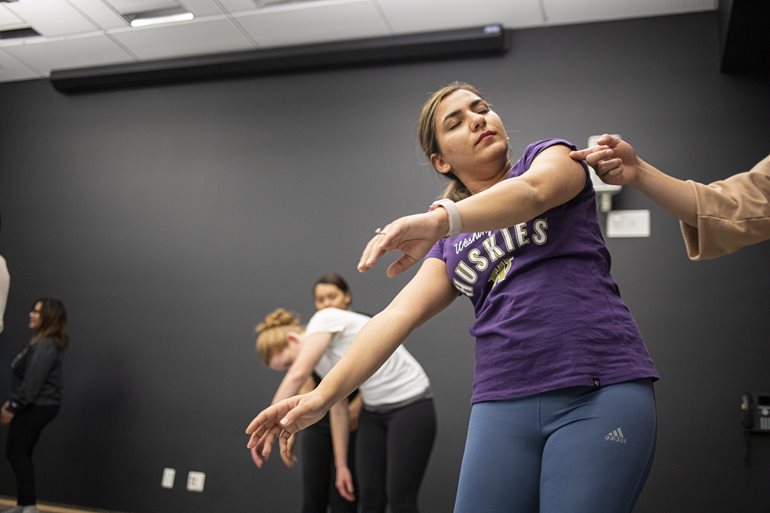
By Sean Park
Photos by Mark Stone
Curiosity is more than just a value at the University of Washington Bothell. It is a part of the curriculum.
Students have “elective” requirements — in addition to courses in their declared majors and minors — that encourage them to explore other interests.
One such course is BIS 134: Introduction to Dance, in the School of Interdisciplinary Arts & Sciences. Taught by lecturer Diana Garcia Snyder, the class is offered on Tuesdays and Thursdays in two separate sections and is a favorite for many students.
“Introduction to Dance is meant to relieve stress and help students feel closer to their bodies,” said Snyder. “It’s a great way to remind students that our bodies are our instruments. It’s not something we should take for granted.”
Different cultures, different dances
For the first half of the quarter, students in the class explore ballet, contemporary dance and, Snyder’s favorite, butoh.
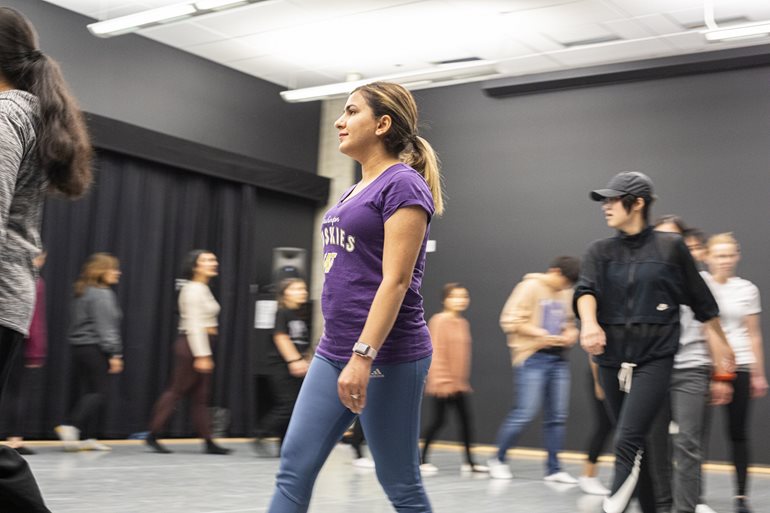
Originated in Japan, butoh is a powerful dance that focuses on the transformation of energy, emotion and limits of the body. Snyder came across butoh during her dance career when she was researching how movement is good for health. As a lecturer at the university and a professional dancer, she continues this research in addition to teaching at her own dance studio in Seattle – Motion33.
For the second half of the class each quarter, Snyder selects a type of dance to teach that reflects the background of the students in that section. Every culture traditionally has its own type of dances, and she likes to tailor her course to help students become more familiar with their heritage or that of their classmates. For example, if there are many Latin American students, she will teach salsa to the entire class.
Students aren’t the only ones receiving a history lesson through dance. Snyder is fascinated and just as much engaged.
“We have a very diverse population at UW Bothell, so I like to mix it up,” said Snyder. “A lot of times, I will study with students about their culture and get to learn new movements with them.”
Breathe – it’s good for you
At the start of every session, students break up into groups based on how they are feeling. They are asked to pay attention to their emotional state, such as identifying feeling energetic, stressed, angry, lethargic or anything in between. Depending on their emotional state, the students follow a particular sequence of inhales and exhales that helps them unwind and focus for the class.
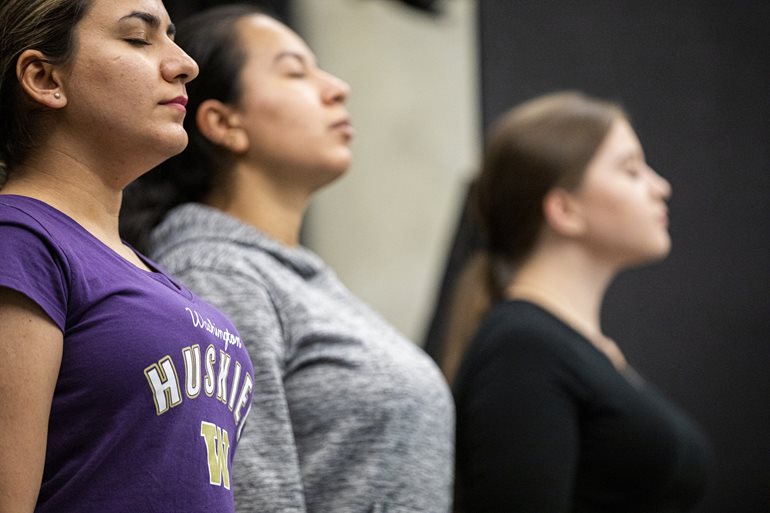
Snyder introduced these techniques after teaching for a few years and realizing many of her students were coming to class feeling anxious from their studies.
“They weren’t getting the full experience if they couldn’t relax inside the studio,” said Snyder. “So, I adjusted my class to teach them how to relax. Plus, it’s a skill they can carry over to other parts of their lives.”
The addition of breathing exercises quickly became a cornerstone for her dance classes.
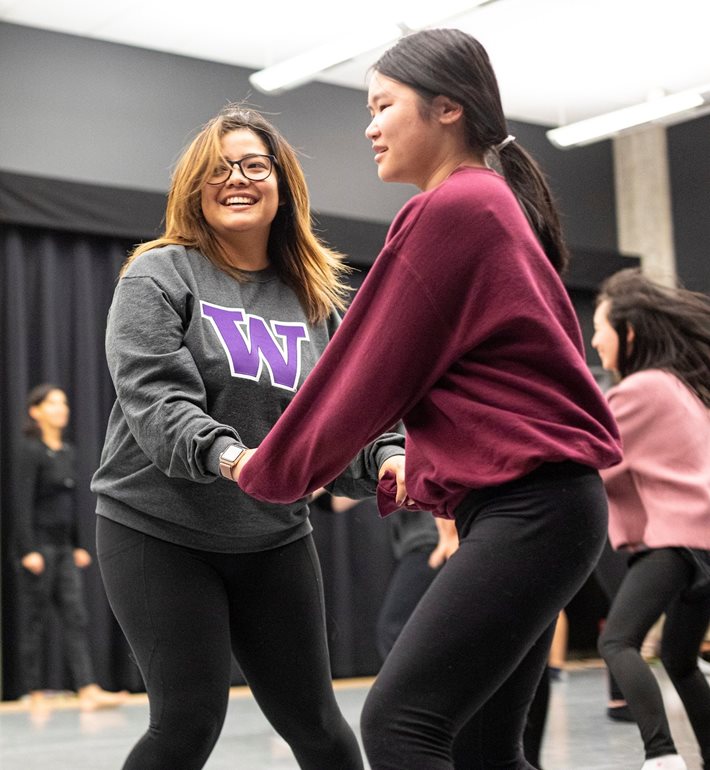
“One of my favorite aspects of the class is the warm-up at the beginning,” said Elisa Sagisa, a sophomore majoring in Law, Economics and Public Policy. “A lot of us get caught up in our academics and life outside of school, and the breathing exercises help us leave all our problems at the door.”
Sagisa had previously attended dance classes as a child but was “inspired to dance again” after taking Snyder’s class. “Diana is really passionate about dancing, and it makes everything more interesting,” she said. “She really pushes the importance of having a creative outlet and the message that we can express how we feel in life through movement.”
Snyder received her master’s in Dance Education, Choreography and Research from the University of Washington, and says she loves teaching.
“We put a lot of focus on our cognitive abilities,” she said, “but we should never forget the importance of our body and our overall health.”
